An underground wire locator instrument helps in accurately locating the path of the underground wires. It also measures the accurate depth of the invisible underground wires. An underground wire locator comprises two parts - a transmitter and a receiver. An AC generator that supplies the signal current to the underground cable to be traced is a transmitter. The transmitter may typically set the signal at a particular frequency.
The transmitter places an electrical signal on the traced cable, while that signal is picked up by the receiver, allowing the locator operator to track the direction of the signal and follow the located cable.
There are many models of underground cable locators on the market. If you are wondering what is the best underground wire locator?
In this article, we will be looking at some of the best underground wire locators available in the market with detailed specifications including the advantages and disadvantages.
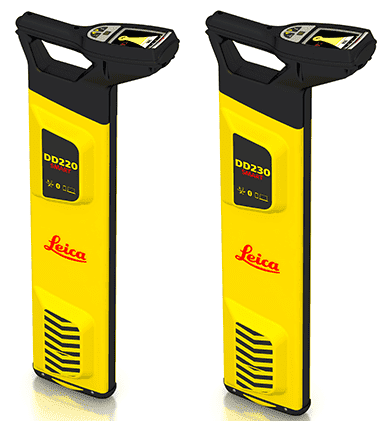
First, we’ll be looking at the Leica DD 230 SMART Utility Locators Solution. This tool is designed to automatically identify underground assets deeper, faster, and more accurately. All of these tools come with the state of the art latest DX Shield software.

Leica DD 230 Smart Utility Locators Solution
This is the only tool available in the market which is the complete portfolio of detection solutions for utility professionals and anyone who is breaking ground. The Leica DD SMART utility locator series uses industry-leading digital signal processing to give you the most accurate results. The DD220/230 SMART locators are scalable and designed with the latest Bluetooth technology, providing a wire-free connection to field controllers and mobile devices. To be more productive and efficient, this is our best choice for underground wire locators.
Another product we will be looking at is Leica DD 220 SMART Utility Locators Solution. This is another great underground wire locator from Leica.

Leica DD 220 Smart Utility Locator
This product is slightly cheaper than the 230 series but comes with almost all the functionality of the same. You can consider this product if you don’t require the accuracy of the 230 series.
Understanding the basic principles of an underground wire locator is important. It will prepare you to effectively use Leica’s underground wire locators. It will enhance your ability to determine target location, target depth, and tracing distance. There are two methods of underground wire and pipe location. Both of which require the underground wire to conduct electricity. It simply means they must be metallic.
Active locating is regarded as the first method. Since a transmitter is used to impose an electric current on the piper cable to circulate. For detecting the field produced by the current, a receiver is used.
The second technique is referred to as passive locating. Because a field formed by the current that is already circulating on the cable is identified by the receiver. It does not need any transmitter.
Active locating allows you to build an electrical circuit that can flow through the current. This can be done with three different forms of connections.
The three connecting active modes are direct. Also known as conductive, inductive, and inductive clamps. The direct mode generates the greatest amount of current and increases the success of localization. Less current is generated by the inductive clamp mode. But when the lack of access to the underground pipe or wire prevents you from using the direct mode, it's a reasonable option.
First, take the clip attached to the red cable. Apply it directly to the wire you are trying to locate. Make sure there is a good metal-to-metal contact.
The next step is to position a ground stake as close to 90 degrees as possible to the expected line location path. Press the stake deep into the ground to increase surface contact with the soil.
Once the ground stake is in position, apply the clip attached to the black cable to the ground stake. This is to complete the circuit. It’s important to complete the circuit by properly implementing aground. In general the better the ground the better the signal.
Now a current will flow through underground wire. As the signal travels it gradually leaks into the ground and diminishes the further it gets from the transmitter. One of the keys to getting a good signal is applying the proper frequency.
If conditions are good, good conductor connections, and soil conditions. The current will travel farther at the lowest frequency with less leakage to adjacent structures. An increase in frequency will cause the signal to leak sooner and cover less distance. As a rule, always start with the lowest frequency possible.
Gradually increase it as needed. Remember at higher frequencies, the current will leak to the ground quicker. Which might impact your ability to locate underground utilities.

Underground wire locators use electromagnetic detection to find buried utilities. These devices generate a magnetic field that interacts with the conductors in underground wires, pipes, or cables. The strength and direction of this field help pinpoint the location and depth of buried objects.
The process involves transmitting a radio signal through the ground and detecting its reflection. Different frequencies are used for various types of utilities and soil conditions. Higher frequencies work well for shallow burials, while lower frequencies penetrate deeper into the ground.
Modern wire locators from reputable brands incorporate advanced sound technology to aid in detection. These devices emit distinct audio tones that change in pitch and volume as the operator moves closer to the buried utility, enhancing accuracy and efficiency in the field.
Active locating methods involve using a transmitter to send a signal through the wire or pipe, which is then detected by a receiver. This technique provides precise location data and is often used with tools like metal detectors or specialized underground wire locators. Active methods are particularly effective for locating non-energized lines or pet fence systems.
Passive locating relies on detecting existing electromagnetic fields generated by live power lines or radio frequency signals. This method doesn't require a transmitter and can be useful for initial sweeps of an area. However, it may not be as accurate as active methods and might miss non-energized lines. Some advanced tools combine passive detection with multimeter functionality for enhanced utility.
The choice between active and passive methods depends on the specific job requirements and site conditions. Professional locators often use a combination of both techniques, employing tools with backlights for better visibility in low-light conditions. This comprehensive approach ensures the most accurate and efficient location of underground utilities.
Understanding how underground wire locators work is crucial. Now, let's focus on selecting the right one for your specific needs.

Selecting the right underground wire locator involves evaluating key features and comparing leading models. This section examines essential factors like transmitter power, cathodic protection capabilities, and signal generator options. It also explores top brands, considering aspects such as leak detection and camera integration, to help professionals make informed decisions for their specific needs.
When choosing an underground wire locator, professionals should consider devices with integrated flashlights and lighting features. These additions enhance visibility in low-light conditions, improving accuracy and safety during locating tasks. Some advanced models also include thermometers, allowing operators to monitor ambient temperature and adjust settings accordingly.
Irrigation system compatibility is another crucial feature to evaluate. Wire locators designed for use with irrigation systems can detect buried sprinkler wires and valves, streamlining maintenance and repair processes. This specialized functionality proves invaluable for landscaping professionals and property managers.
Noise reduction technology significantly impacts locator performance. High-quality underground wire locators incorporate noise filtering systems that minimize interference from nearby power sources or equipment. This feature ensures clearer signals and more precise readings, especially in urban or industrial environments where electromagnetic noise is prevalent.
Quinn Equipment offers a range of underground wire locators suitable for various applications, including yard work and plumbing projects. Their devices feature advanced steel detection capabilities, making them ideal for locating buried utilities in diverse soil conditions, including sand. These locators utilize capacitor technology for improved sensitivity and accuracy.
Leica GeoSystems, a brand carried by Quinn Equipment, produces high-quality underground wire locators known for their durability and precision. Their models excel in challenging environments, such as construction sites with complex underground infrastructure. Leica's locators often incorporate multi-frequency options, allowing operators to adapt to different utility types and depths.
When comparing leading models, professionals should consider factors such as depth range, signal strength, and ease of use. The following table outlines key features of top underground wire locator brands:
| Brand | Depth Range | Signal Strength | Special Features |
|---|---|---|---|
| Quinn Equipment | Up to 30 feet | High | Steel detection, sand penetration |
| Leica GeoSystems | Up to 50 feet | Very High | Multi-frequency, GPS integration |
The search ends. Now, the real work begins. Let's examine the top underground wire locators available today.

This section evaluates top underground wire locators, examining their features, capabilities, and user experiences. It focuses on signal strength, measurement accuracy, and calibration processes. The analysis covers radio frequency technologies and ground penetration abilities, providing insights into device performance across various soil conditions.
Quinn Equipment offers underground wire locators with advanced features such as inductive coupling technology. This feature allows users to locate utilities without direct connection, enhancing efficiency in scenarios where access points are limited. The devices' robust plastic housings provide durability for demanding job site conditions.
Leading wire locator models incorporate fuse protection systems to safeguard internal components from electrical surges. This feature extends the device's lifespan and ensures consistent performance, even when exposed to varying voltage levels in underground utilities. Some units also include removable skins for easy maintenance and customization.
Innovative cart designs have revolutionized the usability of underground wire locators. These carts allow operators to maneuver the equipment easily across various terrains, reducing fatigue during extended locating sessions. The integration of multiple sensors on these carts enables simultaneous detection of different utility types, streamlining the locating process.
Consider User Experiences and Ratings
Electrical contractors have reported positive experiences with Quinn Equipment's underground wire locators when working in water-laden environments. These devices maintain accuracy in wet conditions, allowing professionals to detect power cables efficiently. Users appreciate the locators' ability to penetrate through water-filled trenches, enhancing safety on job sites.
Manufacturing professionals have noted the durability of Quinn Equipment's wire locators in harsh industrial settings. The robust construction withstands frequent use in challenging environments, providing reliable performance for locating underground utilities. Users highlight the devices' consistent accuracy when detecting buried power cables, even in areas with high electromagnetic interference.
Feedback from field technicians indicates that Quinn Equipment's wire locators offer intuitive operation and clear displays. These features enable quick identification of buried utilities, reducing project timeframes and improving overall efficiency. Users particularly value the locators' ability to differentiate between various types of underground infrastructure, including water lines and electrical conduits.
Electrical contractors have reported positive experiences with Quinn Equipment's underground wire locators when working in water-laden environments. These devices maintain accuracy in wet conditions, allowing professionals to detect power cables efficiently. Users appreciate the locators' ability to penetrate through water-filled trenches, enhancing safety on job sites.
Manufacturing professionals have noted the durability of Quinn Equipment's wire locators in harsh industrial settings. The robust construction withstands frequent use in challenging environments, providing reliable performance for locating underground utilities. Users highlight the devices' consistent accuracy when detecting buried power cables, even in areas with high electromagnetic interference.
Feedback from field technicians indicates that Quinn Equipment's wire locators offer intuitive operation and clear displays. These features enable quick identification of buried utilities, reducing project timeframes and improving overall efficiency. Users particularly value the locators' ability to differentiate between various types of underground infrastructure, including water lines and electrical conduits.
The right tool is only half the battle. Knowing how to use it safely can make all the difference.
Effective and safe use of underground wire locators requires proper worksite preparation and adherence to operating guidelines. This section covers essential steps for preparing the worksite, including considerations for engines, pipes, and metal objects. It also provides step-by-step instructions for operating the locator, addressing key components like amplifiers and circuit breakers.
Before using an underground wire locator, professionals must prepare the worksite to ensure accurate utility detection. This involves clearing the area of metal objects that could interfere with the locator's signal. Operators should also identify and mark any visible utility access points, such as manholes or valve boxes, to provide reference points for the locating process.
Soil conditions play a crucial role in the effectiveness of wire locators. Technicians should assess the soil type and moisture content, as these factors can affect signal propagation. In areas with high soil pressure or compaction, additional steps may be necessary to enhance signal penetration and improve detection accuracy.
Proper calibration of wire locators is essential for reliable results. Operators should perform a calibration check using known utility locations or test points before beginning the locating process. This calibration ensures the device is accurately measuring depth and position, minimizing the risk of false readings or missed utilities. The calibration process typically involves the following steps:
Operators should begin by setting the wire locator's sensor to the appropriate frequency for the target utility. This step ensures optimal detection of copper wires or other conductive materials. The chosen frequency affects the device's ability to penetrate different soil types and detect utilities at various depths.
Next, technicians must adjust the locator's voltage settings to match the expected signal strength of the buried utilities. This calibration helps filter out background noise and improves the accuracy of depth measurements. Proper voltage adjustment is crucial for detecting low-power signals from non-energized lines or weak transmissions through challenging soil conditions.
Finally, operators should systematically sweep the area, paying close attention to the locator's information display and audio signals. As the sensor detects underground electronics, technicians must mark the utility's location and depth according to industry standards. This process may require multiple passes to ensure all buried utilities are accurately identified and mapped.
Safety matters. But knowing what not to do is just as crucial.
Accurate underground wire location requires understanding factors that affect detection and applying best practices. This section examines common issues impacting locator performance, such as power supply interference and environmental conditions. It also covers proven techniques for reliable results, including proper equipment use and site preparation methods used in the United States.
Electromagnetic interference from nearby power sources can significantly impact underground wire locator accuracy. Relay stations and high-voltage transmission lines may create distortions in the locator's signal, leading to false readings. Operators must be aware of these potential sources and adjust their techniques accordingly to ensure precise detection.
The composition of underground conduits can affect signal propagation and detection accuracy. Polyvinyl chloride (PVC) pipes, for instance, do not conduct electromagnetic signals as well as metal conduits, making them more challenging to locate. Technicians should consider the types of materials used in underground infrastructure when selecting locator frequencies and interpreting results.
Signal velocity through different soil types can influence the depth accuracy of wire locators. Variations in soil moisture, density, and mineral content can alter the speed at which electromagnetic waves travel, potentially leading to inaccurate depth measurements. Operators should calibrate their equipment's antenna settings based on local soil conditions to optimize detection performance and ensure reliable depth estimates.
Technicians should employ a multi-frequency approach when locating underground wires to enhance detection accuracy. By using different frequencies, operators can locate various types of utilities, including electrical cables and coaxial cables. This method proves particularly effective when dealing with complex underground infrastructures that may contain both metallic and non-metallic conduits.
Proper grounding techniques are essential for reliable underground wire location. When locating electrical conduits or fence wiring, operators must establish a solid ground connection to minimize signal loss and improve detection range. This practice helps prevent short circuits and ensures accurate depth measurements, especially in areas with high soil resistivity.
Operators should conduct regular equipment maintenance and calibration to ensure optimal performance of underground wire locators. This includes checking for worn or damaged components, such as antennas or sensor heads, which can affect the device's ability to detect buried utilities accurately. Regular maintenance helps prevent false readings and improves the overall reliability of locating electrical cables and other underground infrastructure.
The job's not done when you've found the wires. Your tools need care too.
Proper maintenance of underground wire locators ensures optimal signal processing and extends equipment lifespan. This section covers routine calibration techniques, including headphone checks, and storage practices to protect electronic components. Adhering to these guidelines helps maintain accuracy in locating underground utilities for home improvement and electrical projects.
Regular calibration of underground wire locators ensures accurate detection of electrical conduits and pipelines. Technicians should perform calibration checks before each use, comparing the locator's readings to known utility positions. This process helps maintain the device's precision, crucial for projects involving Robotic Total Stations and complex underground infrastructure.
Maintenance of wire locators includes inspecting and cleaning sensor components to prevent signal interference. Operators should examine the antenna and receiver for any damage or debris that could affect performance. Proper care of these elements enhances the locator's ability to detect underground utilities, complementing the accuracy of total station measurements in construction layouts.
Quinn Equipment recommends scheduling professional maintenance for wire locators annually. This service typically involves comprehensive diagnostics, firmware updates, and recalibration of sensitive components. Regular professional maintenance ensures optimal performance and longevity of the equipment, supporting efficient detection of electrical and pipeline systems in various soil conditions.
Proper storage of underground wire locators is crucial for maintaining their accuracy and extending their lifespan. Quinn Equipment recommends storing devices in a dry, temperature-controlled environment to protect sensitive electronic components. Avoiding extreme temperatures and humidity helps prevent damage to internal circuits and sensors, ensuring reliable performance during utility detection tasks.
Technicians should use padded cases or protective covers when transporting wire locators between job sites. These accessories shield the equipment from impacts and vibrations, reducing the risk of misalignment or damage to calibrated components. Proper storage and transportation practices contribute to the longevity of wire locators, supporting their use alongside total stations in construction layout projects.
Regular inspection of storage conditions is essential for maintaining wire locator functionality. Operators should check for signs of corrosion on battery contacts and ensure all connections are clean and secure. Proper care of these elements helps preserve the equipment's ability to detect underground utilities accurately, complementing the precision of Robotic Total Stations in construction and surveying applications. Recommended storage practices include:
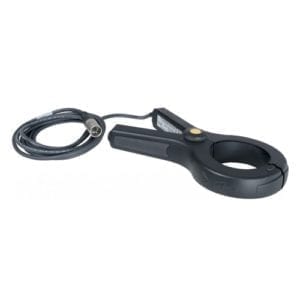
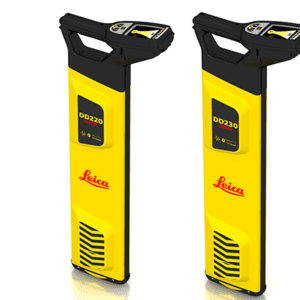

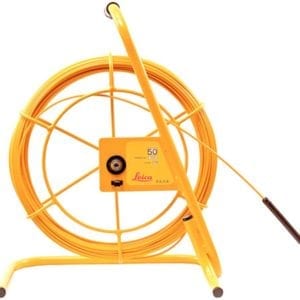
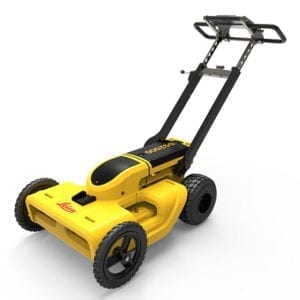
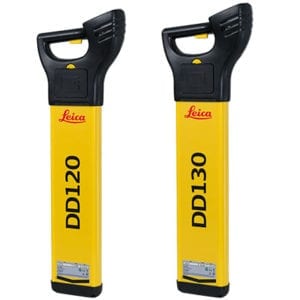
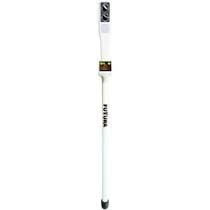

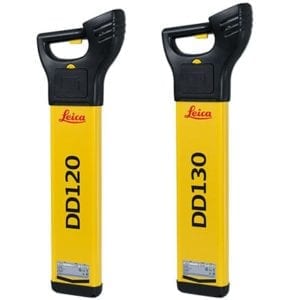
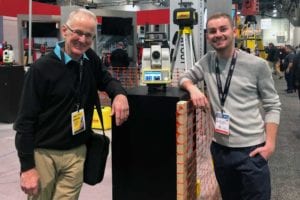
Leaving so soon?
Get Your Free Ultimate Buyer's Guide to Total Stations!
Unlock expert insights and make the right choice for your construction layout needs.
